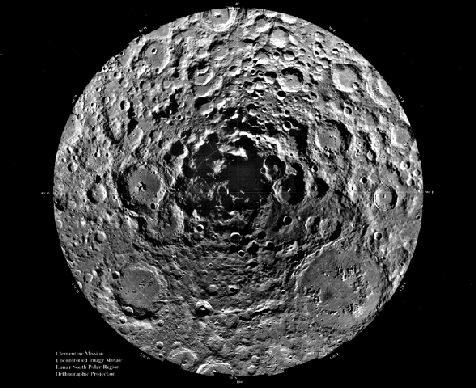Explanation: Ice on the Moon? The prospecting Clementine spacecraft may well have discovered it. In 1994, Clementine spent 70 days in lunar orbit mapping the Moon's surface. Shown above is a dramatically detailed composite view centered on the Lunar South Pole - constructed from 1500 Clementine images. This area contains part of the South Pole-Aitken impact basin, the largest known crater in the solar system, probably caused by the impact of a comet or asteroid. The depth of the basin and crater walls at the Lunar South Pole create the permanent shadow region visible above - hypothesised to be large and cold enough to trap water brought to the moon by cometary impacts as surface ice. Indeed, a recent analysis of Clementine data from this area has found a signature of water ice. Water on the Moon presents exciting possibilities as resource for future lunar exploration.
Authors & editors:
Robert Nemiroff
(MTU) &
Jerry Bonnell
(USRA)
NASA Web Site Statements, Warnings,
and Disclaimers
NASA Official: Jay Norris.
Specific
rights apply.
A service of:
LHEA at
NASA /
GSFC
& Michigan Tech. U.
Based on Astronomy Picture
Of the Day
